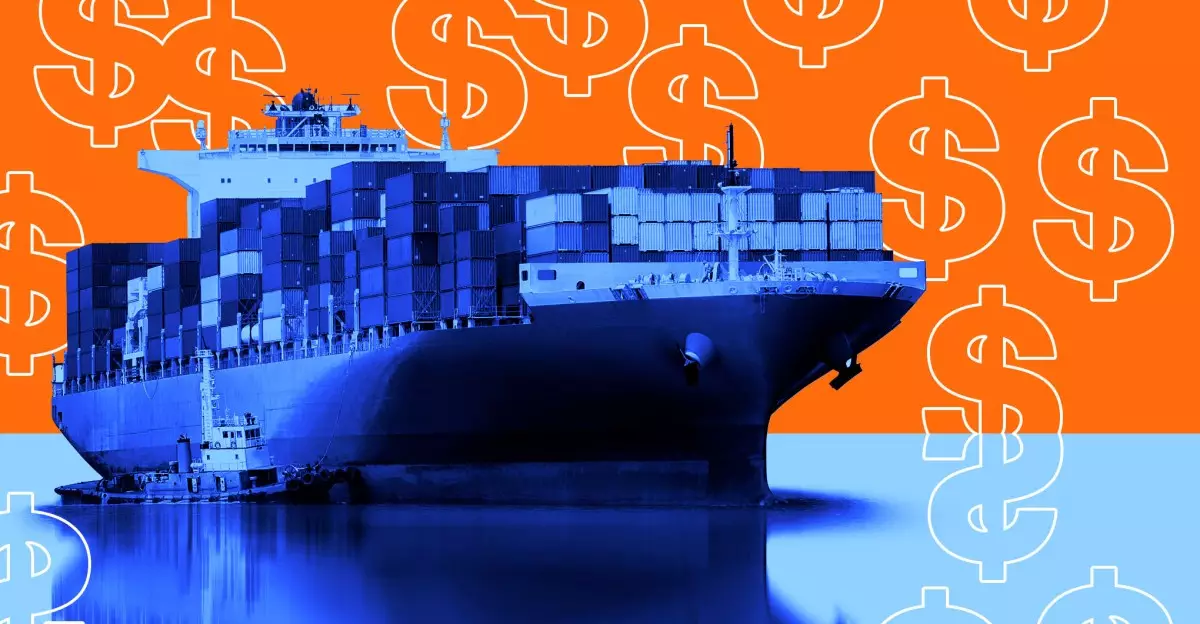The recent expiration of the de minimis exemption for packages from China and Hong Kong has sent ripples through the e-commerce landscape, raising significant concerns about the future of low-cost shopping. With President Trump’s administration removing a ruling that allowed U.S. consumers to import cheap goods without incurring tariffs, the days of bargain hunting from overseas may have come to an abrupt end. This change couldn’t have arrived at a more chaotic time, and the implications are profound for consumers, businesses, and the economy as a whole.
The De Minimis Exemption: A Lifeline for Shoppers
For years, the de minimis exemption has served as a lifeline for American consumers looking to score affordable deals from platforms such as Shein and Temu. Prior to May 2nd, 2025, packages valued at under $800 could enter the U.S. duty-free. This regulation enabled about 1.4 billion packages to flood into the market during 2024 alone, predominantly from China. Many shoppers took advantage of this exemption without realizing its significance; however, countless businesses crafted their shipping models around it, relying on the efficiency it provided.
Yet, with the recent expiration of the exemption, U.S. consumers are staring down the barrel of inflated costs. Tariffs will now apply not just to higher-value packages but also to those previously considered insignificant. This change has created confusion and frustration among consumers who now find themselves unprepared for the abrupt shift.
The Tariff Rollercoaster Effect
The complexities surrounding the transition to this new tariff structure cannot be overstated. Initially, the proposed elimination of the de minimis exemption resulted in chaos within the postal system, leading to immediate backlash from both logistics companies and consumers alike. The United States Postal Service (USPS) even retracted a statement announcing a temporary suspension of shipments from China and Hong Kong, highlighting the impulsivity and confusion that surrounded this decision.
The White House’s subsequent decision to pause the enforcement of the new tariffs was ostensibly meant to give time to implement adequate systems for processing and collecting tariffs. However, the validity of this pause is under scrutiny. As e-commerce continues to proliferate, will the necessary infrastructure ever be put in place to effectively manage this monumental increase in tariffs? Or will it remain an elusive promise, filled with political rhetoric but lacking the necessary strategic foundation?
The Economic Ripple Effects
The financial ramifications of this tariff change extend well beyond simple consumer pricing. Studies estimate that processing what is now a taxable commodity could cost the U.S. around $3.2 billion annually. Freight carriers face mandatory paperwork and scrutiny from Customs and Border Protection (CBP), which could slow down the rapid delivery that online shoppers have come to expect. The added duties will inevitably trickle down, raising prices for average consumers while limiting choices and access to products previously available at a low cost.
To make matters worse, e-commerce giants like Amazon and Shein have established their business models around these exemptions. They depend on low costs to compete in a crowded marketplace and attract price-sensitive consumers. In a post-de minimis world, these companies may either pass increased costs onto the consumer or, in a more drastic measure, limit the range of products available to maintain profit margins.
The Regulation Paradox and Illicit Trade
Adding to the confusion is the Trump administration’s claim that the removal of the exemption is a measure to combat the illicit drug trade, particularly the opioid crisis. However, how this new regulatory framework is more effective at intercepting drugs than the previous system is questionable. There seems to be a significant disconnect between the justification for these tariffs and their actual efficacy in addressing the ongoing challenges posed by synthetic opioids entering the U.S.
Critics argue that closing this loophole may not lead to the intended benefits but instead create additional barriers for legitimate businesses while allowing illicit operations to adapt. It raises an essential question: can regulatory measures effectively reduce drug trafficking, or does this simply complicate the landscape further?
In a market already saturated with challenges, from shipping delays to rising costs, the termination of the de minimis exemption appears to be yet another hurdle for consumers and businesses alike. With real-world consequences looming on the horizon, it remains to be seen how American consumers will adapt, whether businesses will adjust their strategies, and what long-term effects this decision will yield on the e-commerce environment as a whole.

